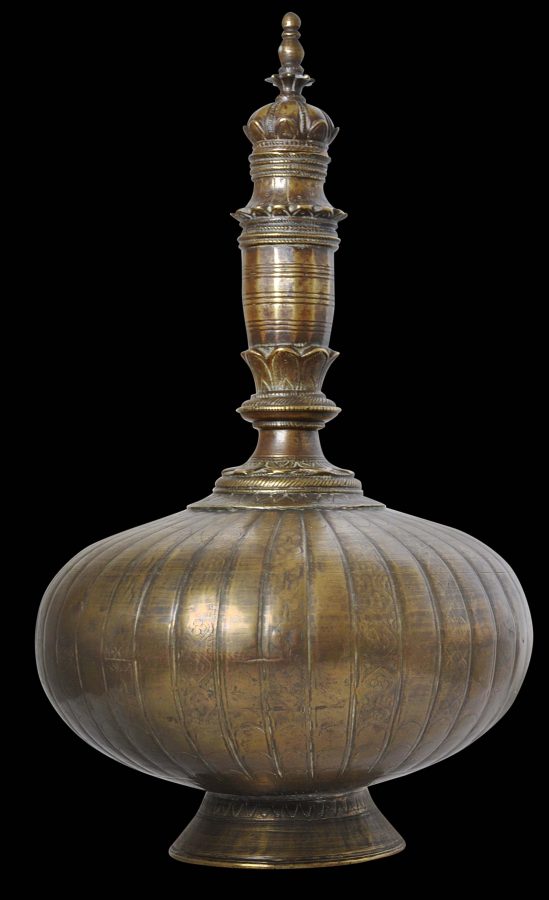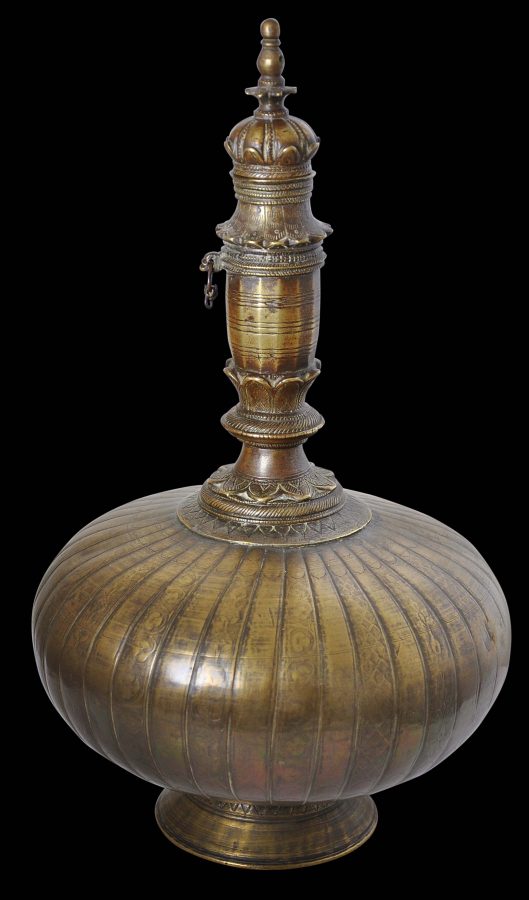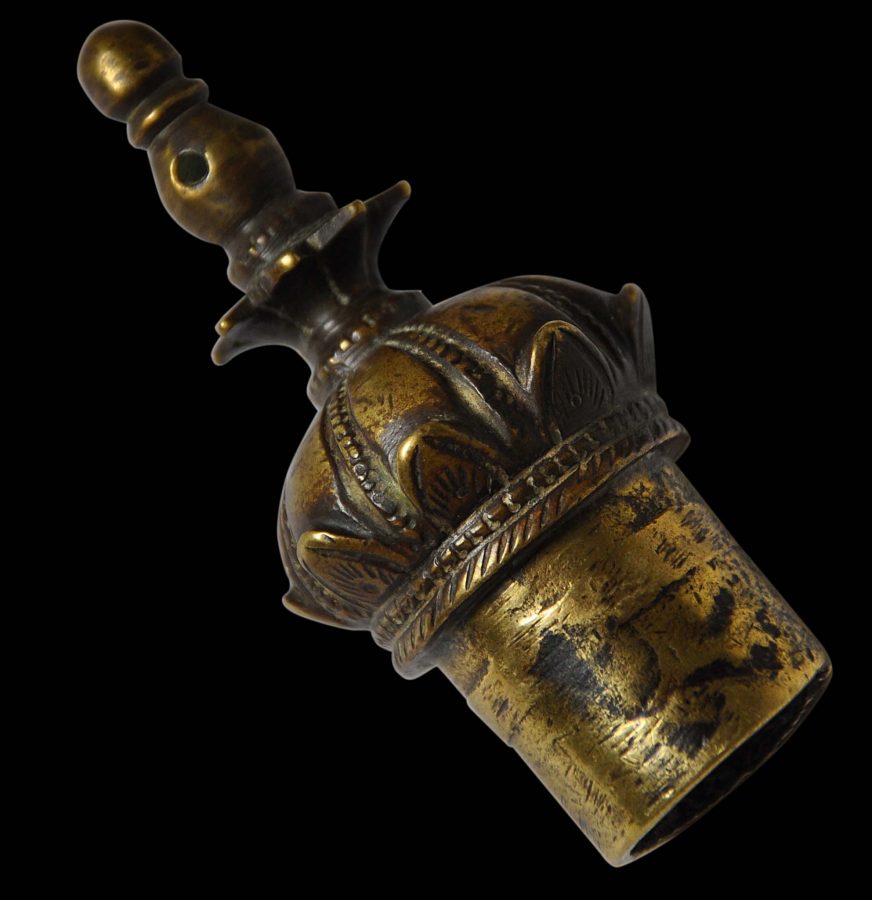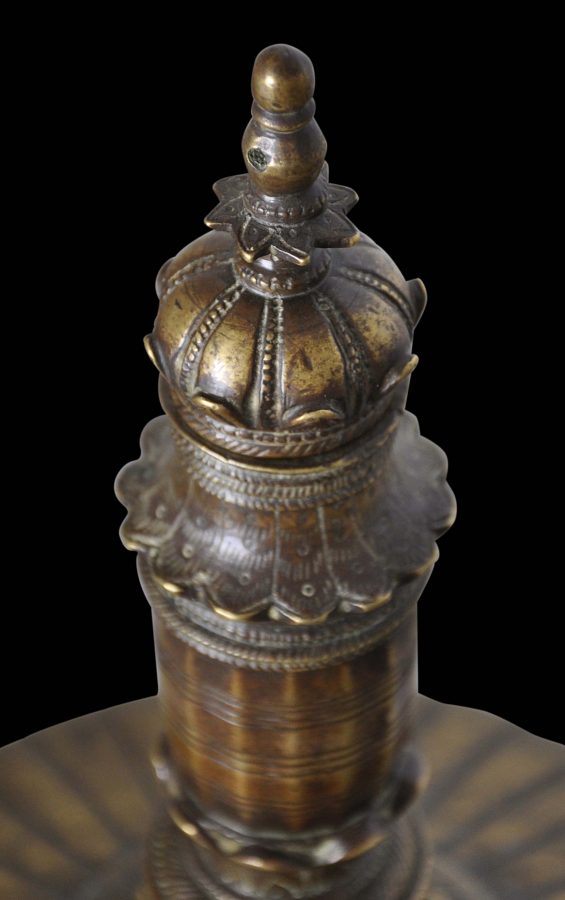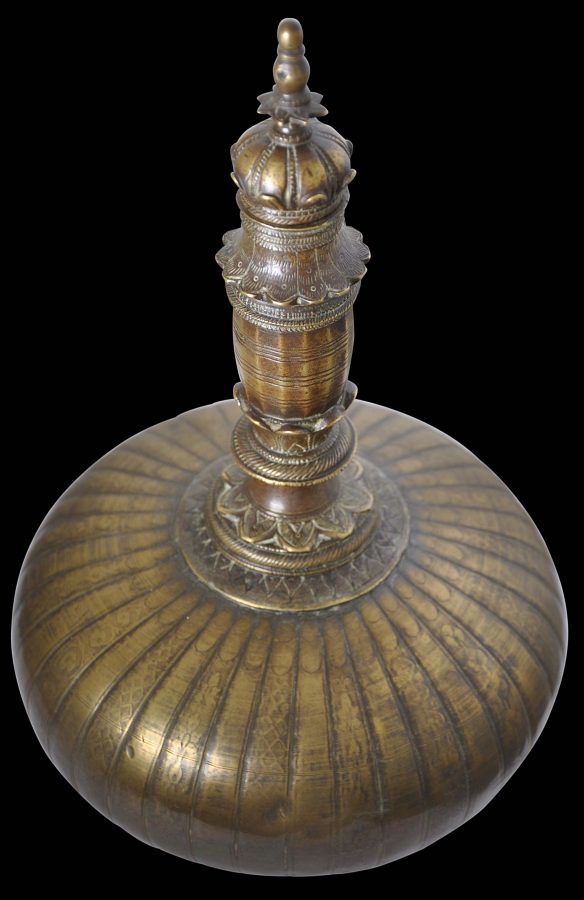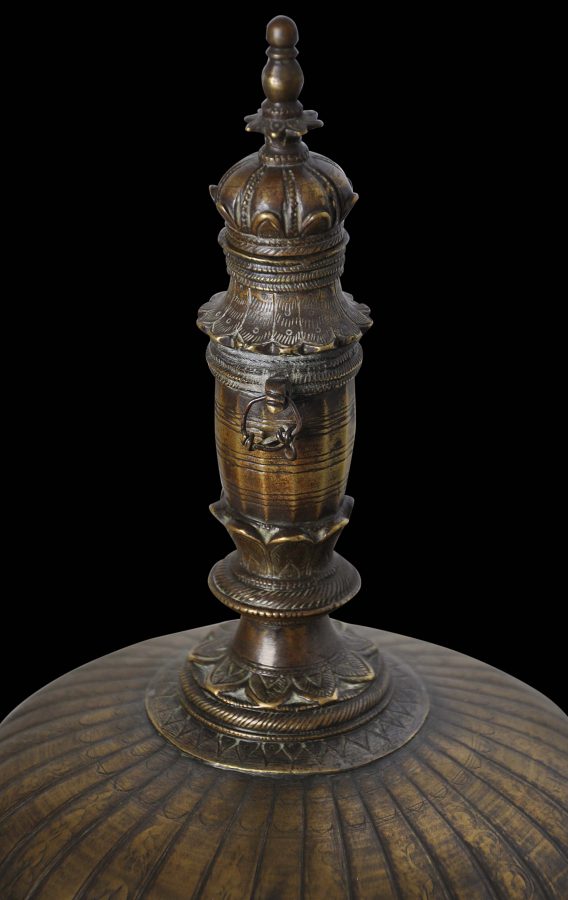This fine brass flask for holding water (known as a surahi in northern India) has a flattened, bulbous body which sits on a flared ring foot. The body has gadrooned sides with are alternatively plain and engraved with vegetal scrollwork. The neck is long, thin and of baluster form. It has been cast and engraved with lotus petal frills in relief. The stopper, of cast brass, is similarly decorated, with gadrooning and petal-like relief. The finial is pierced and would have allowed a chain to connect the stopper to the neck. (There is the remnants of a chain attached to the neck – this itself has wonderful patina.)
Brass flasks such as this example most probably are the prototypes for the terracotta flasks with silver mounts that the European colonialists used in India, Sri Lanka and Batavia in the eighteenth century.
The flash has good wear and a fine, golden patina. There are light dents here and there as might be expected. Overall, it is a fine piece.
References
Zebrowski, M., Gold, Silver & Bronze from Mughal India, Alexandria Press, 1997.


